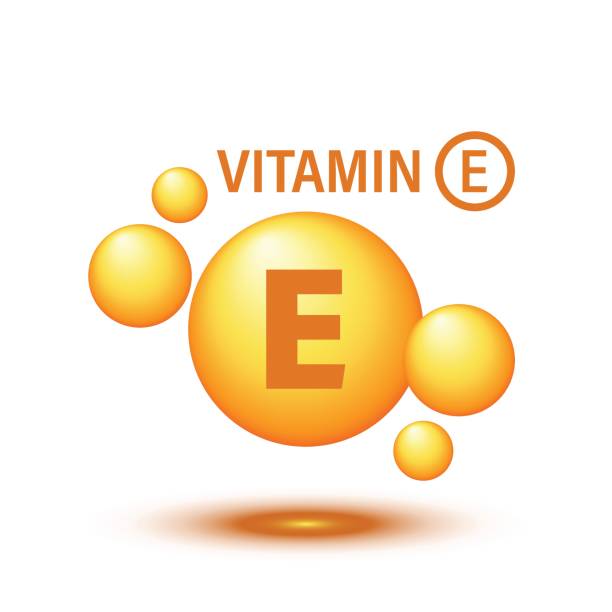WHAT IS VITAMIN E?
Vitamin E is a vitamin that exists in 8 chemical forms, four of which are tocopherol and four are tocotrienols. The only form of this vitamin that can be used in the human body is the form called alpha tocopherol.
Vitamin E is fat soluble, meaning it is absorbed and similarly passes from the body to fats. It is stored in the liver and adipose tissue and used when necessary. In addition to the liver, some vitamin E can be stored in the heart, kidneys, adrenal glands, muscles and tissues.
The daily requirement of vitamin E is 10 mg for men and 8 mg for women. For children, the daily requirement varies between 3-10 mg depending on the age of the child. It is very important to meet this requirement on a daily basis.
Vitamin E is an important nutritional compound for vision as well as brain, skin, eye and circulatory system health. In order for many organs and hormonal systems in the body to function properly, it is necessary to have sufficient vitamin E levels.
Vitamin E is an antioxidant that protects cell membranes in the human body from various types of reactive oxygen.

Free Radicals / Oxidative Stress and Vitamin E
Free radicals in the body are molecules with unpaired electrons that make them unstable. Free radicals are constantly forming in your body. These unstable molecules interact with cells in the body in ways that can cause damage. The process snowballs, cells can be damaged and the body becomes vulnerable to disease.
Antioxidants like vitamin E neutralize free radicals by donating missing electrons that destabilize free radicals. Antioxidants are found in many foods and are also produced in our body using vitamins and minerals found in foods.
Free radicals also serve important functions essential for health [1]. For example, your immune cells use free radicals to fight infections [2]. For these reasons, your body needs to maintain a certain balance of free radicals and antioxidants.
When the number of free radicals outnumbers antioxidants, it can lead to a condition called oxidative stress. Long-term oxidative stress can damage your DNA and other important molecules in your body. Sometimes it even leads to cell death. Damage to your DNA increases your risk of cancer, and some scientists have theorized that it plays a crucial role in the aging process [3] [4].
Air pollution, smoking, alcohol, toxins, high blood sugar levels, high intake of polyunsaturated fatty acids, radiation including excessive sunbathing, bacterial/fungal/viral infections, excessive iron/magnesium/copper/zinc intake, too much or too little oxygen in your body, intense and prolonged exercise that causes tissue damage, excessive intake of antioxidants / lack of antioxidants lead to an increase in the number of free radicals in the body and therefore oxidative stress.
Long-term oxidative stress causes an increased risk of adverse health outcomes such as cardiovascular disease and certain types of cancer.
Vitamin E shows antioxidant function in the body [5] [6] [7] [8]. It helps to reduce free radicals and prevent them from causing harmful effects in the body. In this way, it helps to reduce oxidative stress, prevent the formation of genetic damage in cells, and helps fight many diseases, especially cancer.
Although more research is needed, limited studies have shown that vitamin E has the following benefits:

Other Benefits of Vitamin E
What is Vitamin E Deficiency?
Vitamin E deficiency is usually caused by a problem with the digestion process of dietary fat rather than a diet low in vitamin E. Vitamin E deficiency is a rare condition and can cause problems on the nervous system such as nerve pain, or neuropathy.
ACADEMIC STUDIES
[1] A. Rahal, A. Kumar, V. Singh, B. Yadav, R. Tiwari, S. Chakraborty, L. Dhama (2014). Oxidative stress, prooxidants, and antioxidants: the interplay. Biomed Res Int. 2014; 2014 : 761264.
[2] M. B. Hampton, A. J. Kettle, C. C. Winterbourn. Inside the neutrophil phagosome: oxidants, myeloperoxidase, and bacterial killing. Blood. 1998 Nov 1;92(9):3007-17.
[3] A. K. Singh, P. Pandey, M. Tewari, H.P. Pandey, I.S. Gambhir, H. S. Shukla (2016). Free radicals hasten head and neck cancer risk: A study of total oxidant, total antioxidant, DNA damage, and histological grade. J Postgrad Med. 2016 Apr-Jun; 62(2): 96–101.
[4] I. Liguori, G. Russo, F. Curcio, G. Bulli, L. Aran, D. Della-Morte, G. Gargiulo, G. Testa, F. Cacciatore, D. Bonaduce, P. Abete (2018). Oxidative stress, aging, and diseases. Clin Interv Aging. 2018; 13: 757–772.
[5] G. Y. Lee, S. N. Han (2018). The Role of Vitamin E in Immunity. Nutrients 2018, 10, 1614.
[6] M. G. Traber and J. Atkinson (2007). Vitamin E, Antioxidant and Nothing More. Free Radic Biol Med. 2007 Jul 1; 43(1): 4–15.
[7] A. Altıner, H. Atalay, T. Bilal (2017). Bir Antioksidan Olarak E Vitamini. Balikesir Saglik Bil Derg Cilt:6 Sayı:3 Aralık 2017.
[8] E. Niki, K. Abe (2019). Vitamin E: Structure, Properties and Functions. Chemistry and Nutritional Benefits, 2019, pp. 1-11.
[9] J. J. Thiele, S. Ekanayake-Mudiyanselage (2007). Vitamin E in human skin: Organ-specific physiology and considerations for its use in dermatology. Molecular Aspects of Medicine 28 (2007) 646–667.
[10] L. A. Beoy, W. J. Woei, Y. K. Hay (2010). Effects of Tocotrienol Supplementation on Hair Growth in Human Volunteers. Trop Life Sci Res. 2010 Dec; 21(2): 91–99.
